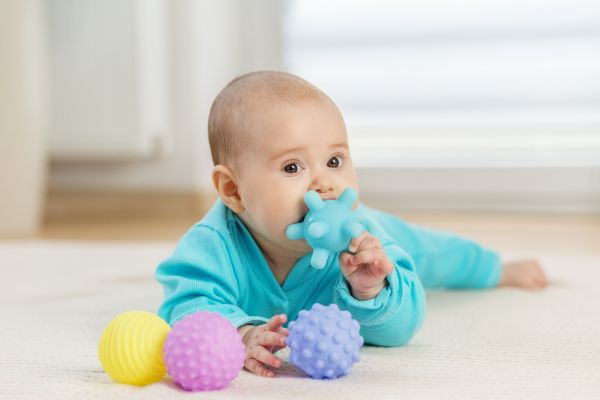When you first bring your baby home, every day feels like a new adventure. One moment, they’re staring curiously at the ceiling fan, and the next, they’re giggling at the sound of your voice. That’s the magic of those early months—your little one is learning about the world at lightning speed. One of the best ways to support that growth is through sensory play. Sensory activities for infants aren’t just cute or fun; they’re powerful tools that shape brain development, motor skills, and even emotional bonding.
Why Sensory Activities for Infants Matter
Let’s be real, babies aren’t born knowing how to make sense of the world. They rely on their senses—touch, sight, sound, taste, and smell—to slowly build that understanding. Engaging in sensory activities for infants gives them the chance to explore safely while also strengthening those neural pathways that fuel growth.
Think of it this way: every time your baby touches a textured toy, hears you sing, or smells something new, tiny connections are forming in their brain. Those experiences build the foundation for language, problem-solving, and even social skills later on. And honestly, it doesn’t have to be complicated. The simplest moments often have the biggest impact.
Touch-Based Sensory Play
Touch is one of the most important senses infants use early on. They want to grab, squish, and feel everything within reach. Introducing different textures can make everyday playtime much more stimulating. You might let your baby run their hands across a soft blanket, a bumpy teether, or even a cool metal spoon.
The thing is, you don’t need fancy toys. Everyday items work just fine. A basket of safe household objects—wooden spoons, silicone spatulas, or fabric scraps—can be a treasure trove for curious little hands. Just remember: safety first. Always supervise and keep choking hazards far away.
Visual Stimulation Activities
Infants are naturally drawn to bold colors and high-contrast patterns. That’s why so many baby toys are black-and-white or brightly colored. Sensory activities for infants that focus on sight can be as simple as hanging a colorful mobile above the crib or showing them picture books with clear, simple images.
Mirrors are another underrated gem. Babies love looking at faces, and when they see their reflection, it sparks curiosity and self-awareness. Sure, they don’t realize it’s them at first, but over time, this kind of play helps with recognition and cognitive growth.
Sound and Music Play
You’ve probably noticed how your baby quiets down—or sometimes gets more excited—when they hear your voice. That’s no accident. Babies are wired to respond to sound, especially the rhythm and melody of human voices. Singing lullabies, playing soft music, or even letting them listen to gentle household sounds can all count as valuable sensory activities.
For a more interactive approach, try using rattles, bells, or even a simple pot and spoon “drum.” These little moments of cause and effect (shake the rattle, sound comes out) are like mini science lessons for babies. And let’s not forget the bonus: music and rhythm also help lay the groundwork for language development.
Smell and Taste Exploration
While smell and taste aren’t as obvious in early play as touch or sight, they’re still important. Babies begin recognizing familiar scents very early, especially their parents. You can gently introduce new smells by bringing safe items close to them—like herbs from the kitchen (think mint, basil, or cinnamon).
As your infant grows and begins exploring solid foods, taste becomes a huge sensory experience. Offering a variety of safe, age-appropriate foods gives them a chance to explore flavors and textures. The goal isn’t just nutrition—it’s about building curiosity and openness to new experiences.
Outdoor Sensory Adventures
Sometimes the best sensory activities for infants happen outside. A short walk in the stroller introduces them to fresh air, sunlight, bird sounds, and moving tree branches. Laying a blanket on the grass and letting your baby explore nature (supervised, of course) adds even more variety—soft grass, cool breeze, and shifting light.
The outdoors is like a giant sensory classroom. And bonus: it’s free. Just remember sun protection and comfort—babies get overwhelmed quickly, so short outings are best.
Sensory Activities That Support Bonding
Here’s the beautiful part: sensory play isn’t just about learning; it’s about connection. When you play peek-a-boo, blow raspberries on your baby’s belly, or cuddle during a story, you’re not just entertaining them—you’re strengthening your bond. Those moments of eye contact, laughter, and gentle touch create a sense of safety and trust.
Bonding is just as important as brain growth. In fact, they go hand in hand. A secure, loving environment gives your baby the confidence to explore, and exploration fuels development.
Keeping It Simple and Stress-Free
Now, before you start feeling pressure to set up elaborate activities, let’s take a step back. Sensory activities for infants don’t need to be Pinterest-worthy crafts or complicated projects. Babies find wonder in the simplest things—a rustling paper bag, the shadow of your hand on the wall, the sound of water splashing during bath time.
The key is consistency and presence. Pay attention to what your baby enjoys, mix things up a little, and don’t overthink it. Honestly, you’re probably already doing more than you realize.
Conclusion: Building a World of Discovery
At the end of the day, sensory activities for infants are about creating little pockets of discovery in everyday life. They’re chances for your baby to explore, learn, and grow while staying connected to you. From textures and colors to songs and outdoor adventures, each small activity adds up to something big—confidence, curiosity, and joy in learning.
So next time your baby stares wide-eyed at a crinkly wrapper or giggles at your funny song, remember: that’s not just play. That’s development in action. And the best part? You get a front-row seat to watch it all unfold.
